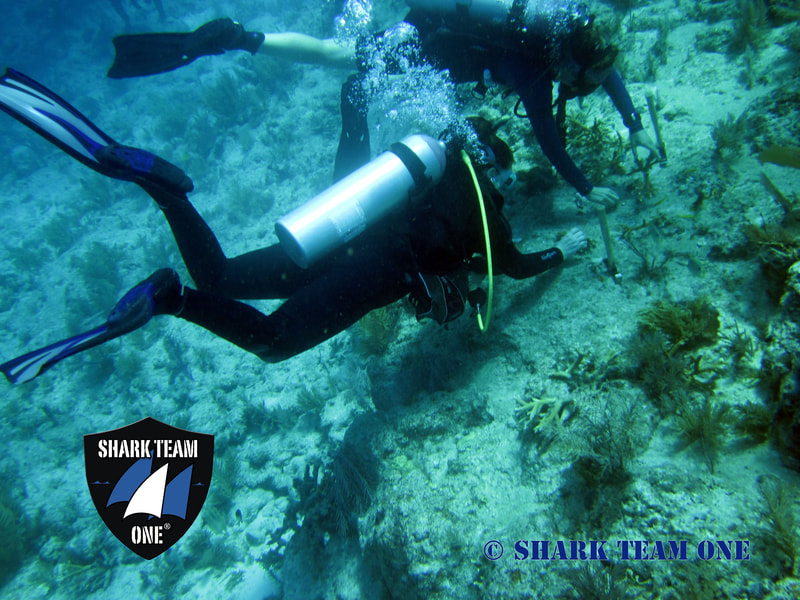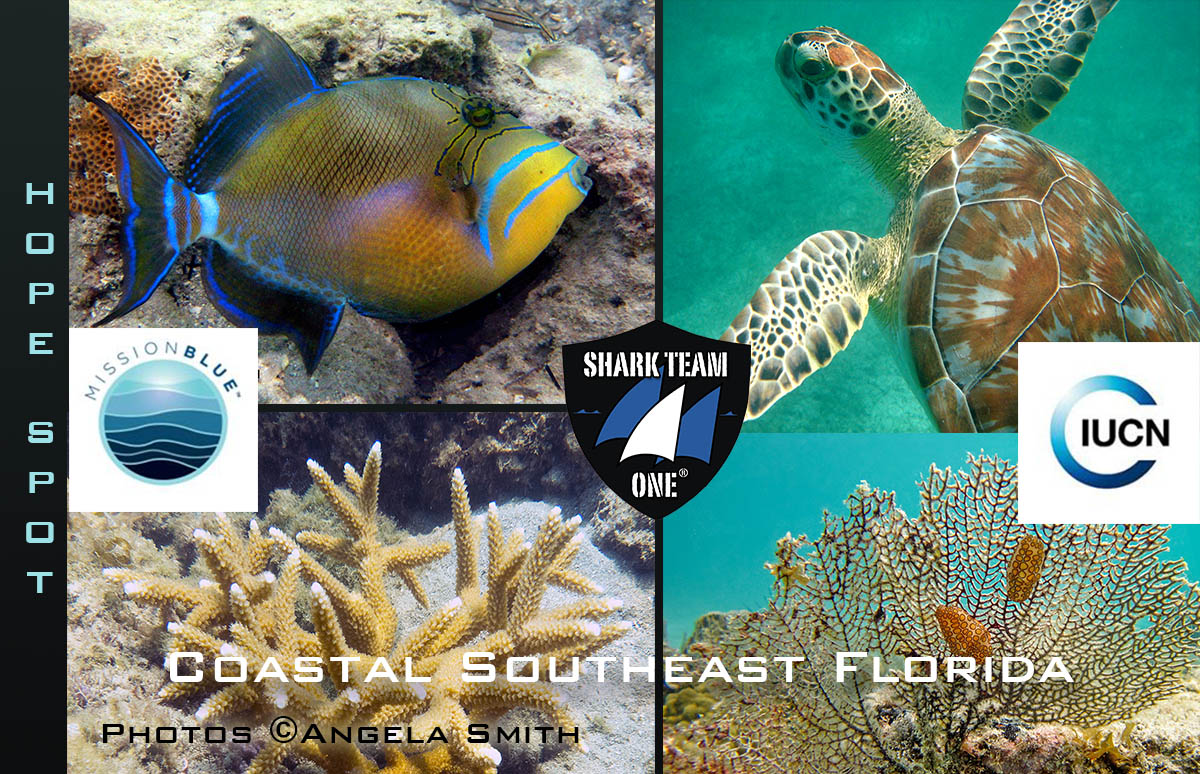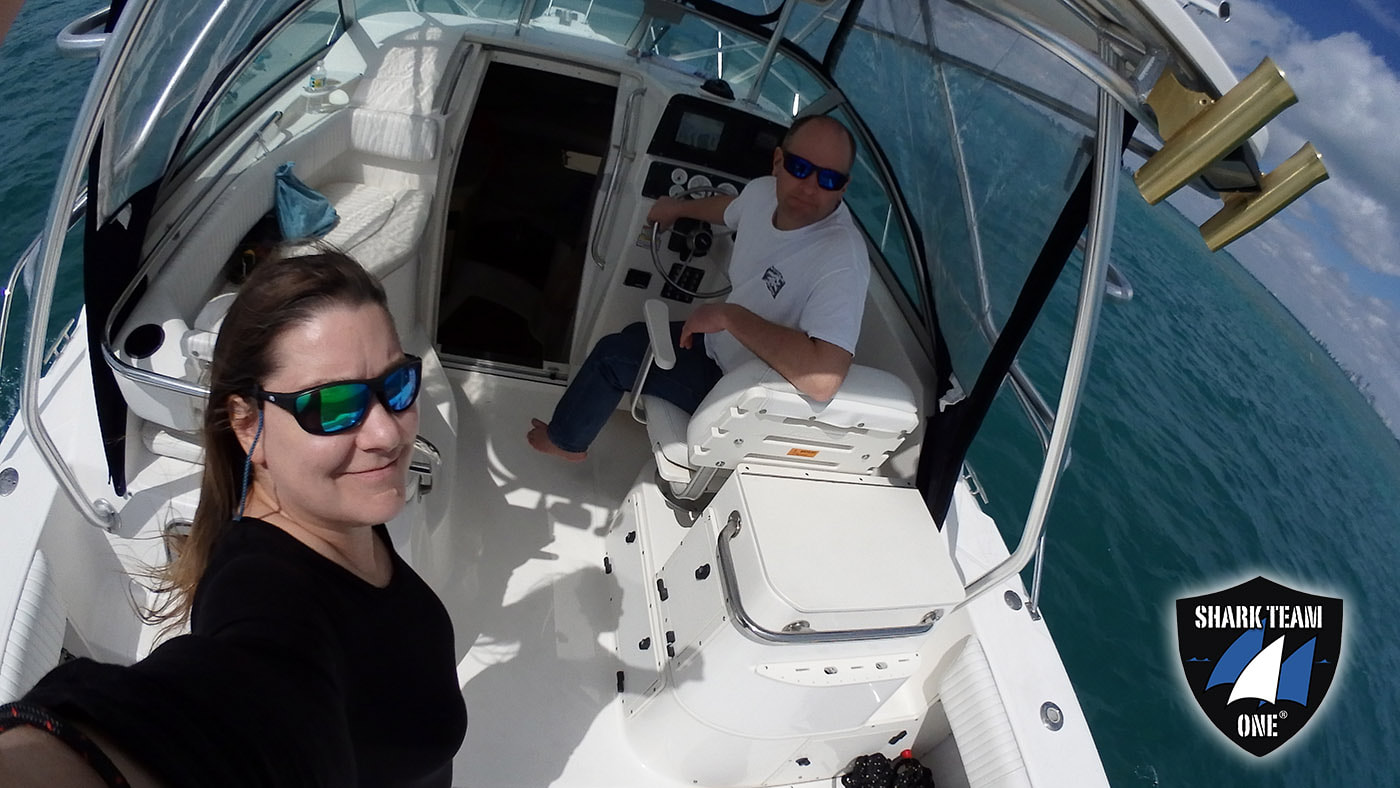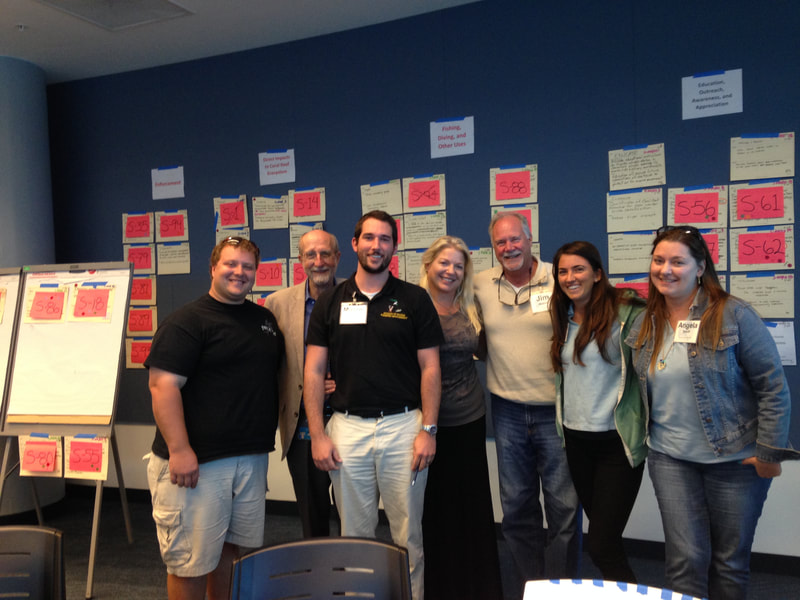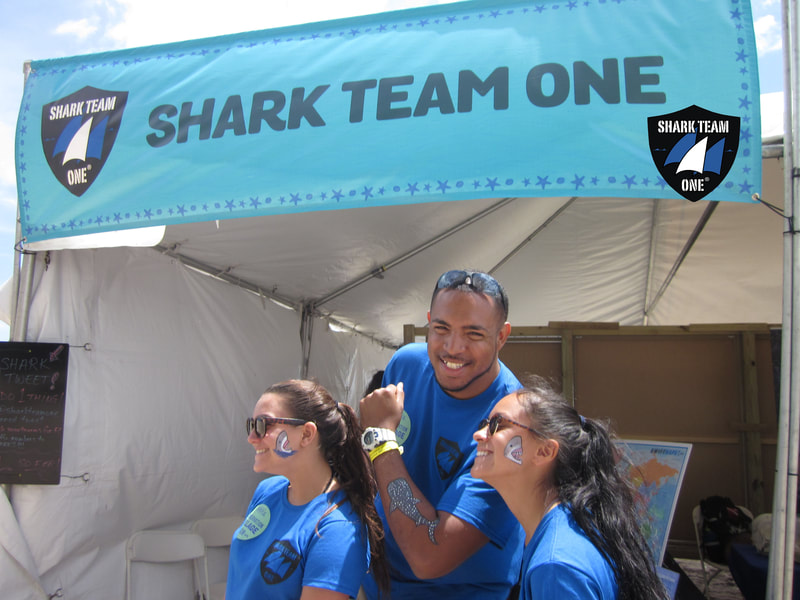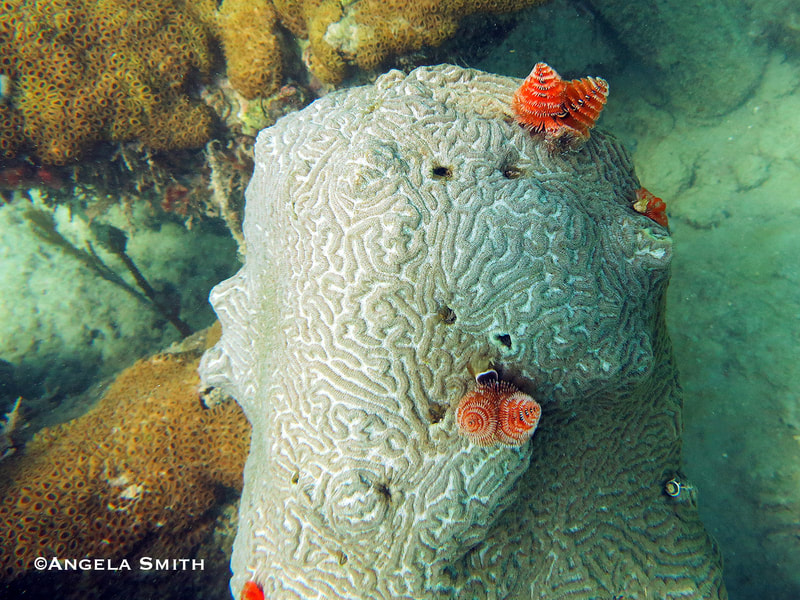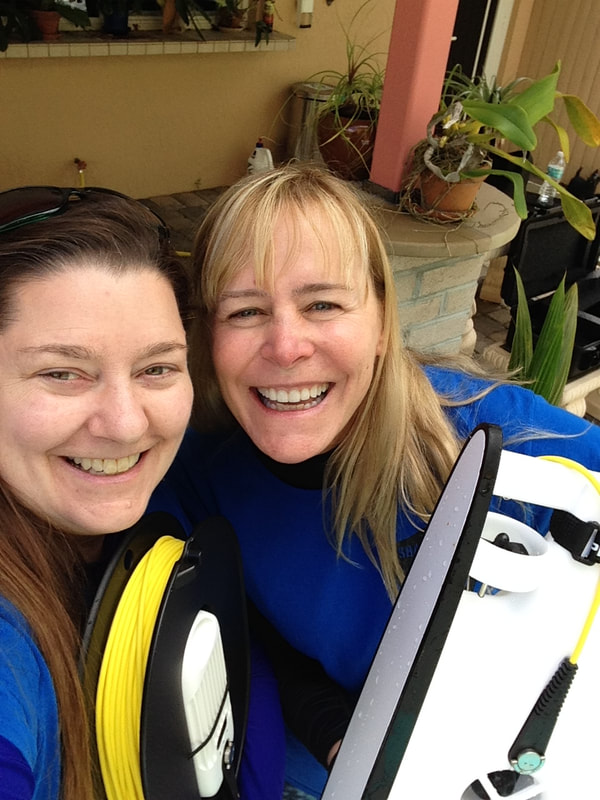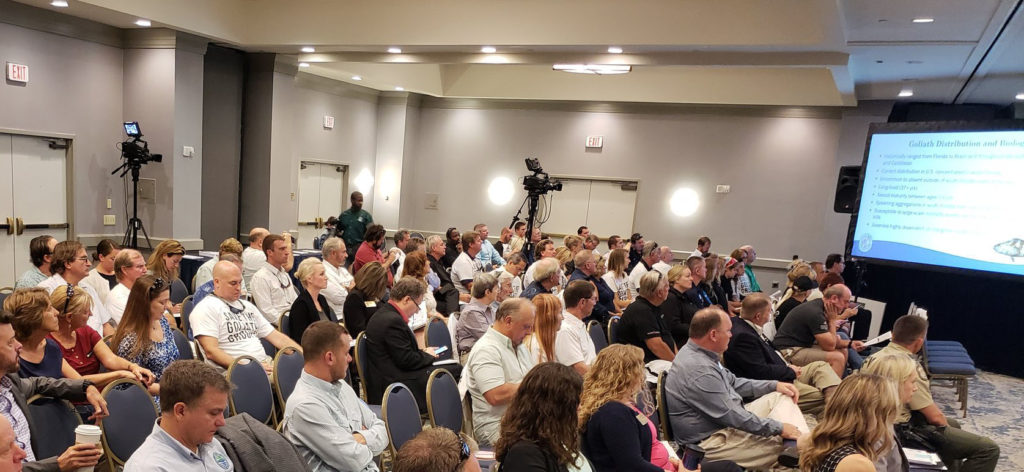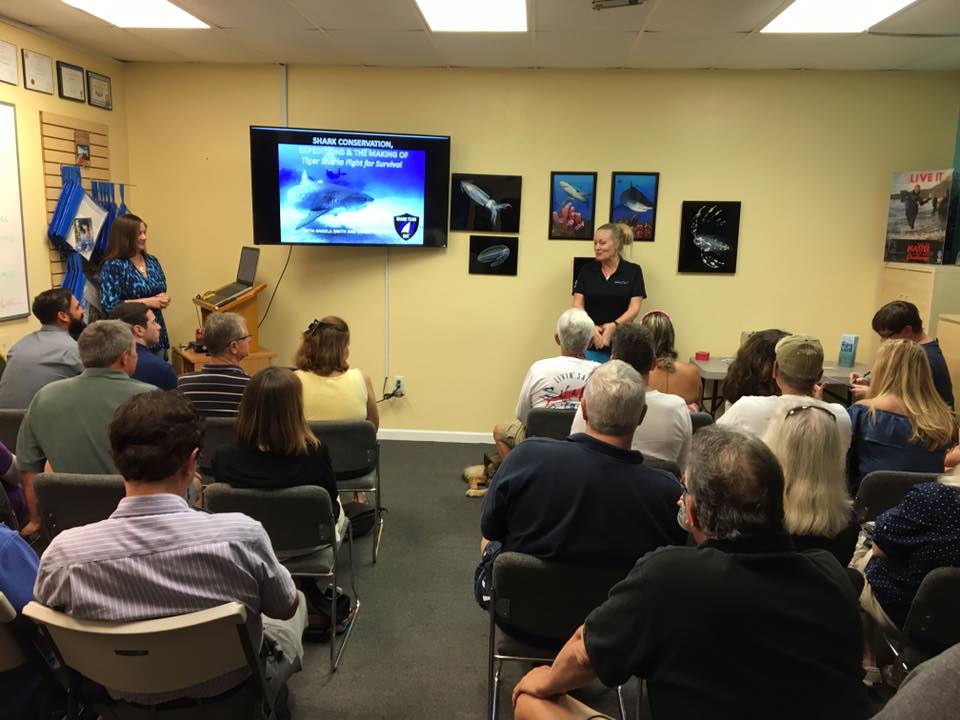Our Ocean Ecosystem Protection program has been working in Southeast Florida since 2016 on marine protected area framework design, all aspects of spatial planning, designation, conservation management, local action strategies, review process and compliance outlines for marine protected areas and designations off the coast of Southeast Florida and the Florida Keys. Our program includes field work, outreach and education about South Florida's endangered species and fragile ocean ecosystems.
Program Projects:
• "Underwater Florida - Windows to Hope"™ - a stakeholder outreach & educational campaign to help save Southeast Florida's unique and endangered ecosystems. Supported by The Curtis & Edith Munson Foundation & matching funding
• Endangered Sharks in Florida Initiative - a project collaborating with local stakeholders & FWC to educate and assist with policy regarding IUCN endangered shark species
• Goliath grouper campaign - "Mission Goliath", community outreach project to help save critically endangered goliath groupers
• Southeast Florida Coral Reef Initiative (SEFCRI) - a community partner project with FL DEP, NOAA, FWC, educational institutions, local NGOs, local stakeholders and the United States Coral Reef Task Force (USCRTF), seeking to create local action strategies to reduce threats to coral reef resources from Key Biscayne in the south to St. Lucie Inlet in the north of Florida. Angela Smith is Vice Chair of NGOs and Shark Team One has been a partner organization since 2015.
• Creation, nomination and designation of the "Coastal Southeast Florida Hope Spot" in conjunction with Mission Blue and IUCN
• Our Florida Reefs (OFR) community planning project - NGO stakeholder group member
• Southeast Florida Coastal Ocean Forum project - NGO group member
• "Underwater Florida - Windows to Hope"™ - a stakeholder outreach & educational campaign to help save Southeast Florida's unique and endangered ecosystems. Supported by The Curtis & Edith Munson Foundation & matching funding
• Endangered Sharks in Florida Initiative - a project collaborating with local stakeholders & FWC to educate and assist with policy regarding IUCN endangered shark species
• Goliath grouper campaign - "Mission Goliath", community outreach project to help save critically endangered goliath groupers
• Southeast Florida Coral Reef Initiative (SEFCRI) - a community partner project with FL DEP, NOAA, FWC, educational institutions, local NGOs, local stakeholders and the United States Coral Reef Task Force (USCRTF), seeking to create local action strategies to reduce threats to coral reef resources from Key Biscayne in the south to St. Lucie Inlet in the north of Florida. Angela Smith is Vice Chair of NGOs and Shark Team One has been a partner organization since 2015.
• Creation, nomination and designation of the "Coastal Southeast Florida Hope Spot" in conjunction with Mission Blue and IUCN
• Our Florida Reefs (OFR) community planning project - NGO stakeholder group member
• Southeast Florida Coastal Ocean Forum project - NGO group member
Program Accomplishments:
• Shark Team One receives funding from The Curtis & Edith Munson Foundation for Shark Team One's
"Underwater Florida - Windows to Hope"™ campaign
• Increased shark protection in Florida waters! Working with Florida Fish and Wildlife Conservation Commission to implement changes to shark fishing regulations. These changes increase survival rates of released sharks and are a big step toward protecting species such as tiger and great hammerhead sharks. We continue to work toward the day when shark fishing practices can be stopped.
• Policy, design and local action strategy work over the course of six years to facilitate the passing of Florida House Bill 53 and Senate Bill 232 on March 19th, 2018. Those bills created the Southeast Florida Coral Reef Ecosystem Conservation Area which is the official designated area for protection and provides state funding for critical coral, shark and ocean ecosystem preservation within the Southeast Florida coastal region.
• Goliath grouper state endangered species protection status successfully maintained in Florida via our campaign and subsequent policy work with FWC. Community and national initiative established to maintain ongoing protection for this critically endangered grouper.
• The IUCN World Conservation Congress and Sylvia Earle announced the Coastal Southeast Florida Hope Spot based on our goals, application and proposed designation for a protected area from Key Biscayne to St. Lucie Inlet adding connectivity to the Florida Keys National Marine Sanctuary. This marine protected area proposal was the result of four years of assessments and policy work. Our proposal was submitted to the IUCN World Conservation Congress for review and subsequently approved.
• Established a long-term water quality monitoring program and coral reef research fund being facilitated by Florida Department of Environmental Protection. Partners in this initiative are Southeast Florida Coastal Ocean Forum and the Southeast Florida Coral Reef Initiative (SEFCRI).
• Issues of shore-based shark fishing placed into agenda of FWC via Shark Team One support and in conjunction with Florida community stakeholder groups. Ongoing support for enactment and protection for both tiger sharks and great hammerhead sharks in Florida waters via this initiative. Direct work with FWC to prohibit great hammerhead tournaments in the state of Florida. Successful campaigns to end sponsorship of shark tournaments in Florida state waters.
• Supported a multi-NGO campaign to keep the West Indian manatee protected in Florida waters under the Endangered Species Act.
• Successful campaign and subsequent policy change to add barracuda to the prohibited species list in Florida state waters.
• Shark Team One and Angela Smith nominated and elected as Vice-chair NGO for Southeast Florida Coral Reef Initiative (SEFCRI).
• Shark Team One receives funding from The Curtis & Edith Munson Foundation for Shark Team One's
"Underwater Florida - Windows to Hope"™ campaign
• Increased shark protection in Florida waters! Working with Florida Fish and Wildlife Conservation Commission to implement changes to shark fishing regulations. These changes increase survival rates of released sharks and are a big step toward protecting species such as tiger and great hammerhead sharks. We continue to work toward the day when shark fishing practices can be stopped.
• Policy, design and local action strategy work over the course of six years to facilitate the passing of Florida House Bill 53 and Senate Bill 232 on March 19th, 2018. Those bills created the Southeast Florida Coral Reef Ecosystem Conservation Area which is the official designated area for protection and provides state funding for critical coral, shark and ocean ecosystem preservation within the Southeast Florida coastal region.
• Goliath grouper state endangered species protection status successfully maintained in Florida via our campaign and subsequent policy work with FWC. Community and national initiative established to maintain ongoing protection for this critically endangered grouper.
• The IUCN World Conservation Congress and Sylvia Earle announced the Coastal Southeast Florida Hope Spot based on our goals, application and proposed designation for a protected area from Key Biscayne to St. Lucie Inlet adding connectivity to the Florida Keys National Marine Sanctuary. This marine protected area proposal was the result of four years of assessments and policy work. Our proposal was submitted to the IUCN World Conservation Congress for review and subsequently approved.
• Established a long-term water quality monitoring program and coral reef research fund being facilitated by Florida Department of Environmental Protection. Partners in this initiative are Southeast Florida Coastal Ocean Forum and the Southeast Florida Coral Reef Initiative (SEFCRI).
• Issues of shore-based shark fishing placed into agenda of FWC via Shark Team One support and in conjunction with Florida community stakeholder groups. Ongoing support for enactment and protection for both tiger sharks and great hammerhead sharks in Florida waters via this initiative. Direct work with FWC to prohibit great hammerhead tournaments in the state of Florida. Successful campaigns to end sponsorship of shark tournaments in Florida state waters.
• Supported a multi-NGO campaign to keep the West Indian manatee protected in Florida waters under the Endangered Species Act.
• Successful campaign and subsequent policy change to add barracuda to the prohibited species list in Florida state waters.
• Shark Team One and Angela Smith nominated and elected as Vice-chair NGO for Southeast Florida Coral Reef Initiative (SEFCRI).
